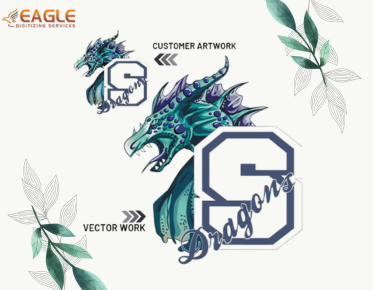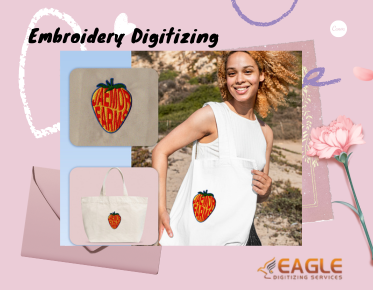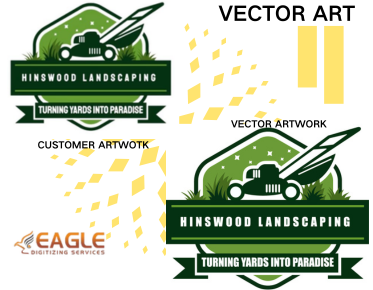The Difference Between Vector and Raster Graphics and Their Applications
Graphics form a crucial part of digital media, significantly influencing designs, animations, and presentations across various platforms. Understanding the difference between vector and raster graphics is fundamental for artists, designers, and developers. In this discussion, we explore the distinctions, applications, and benefits of each type of graphic, complemented by insights from Eagle Digitizing's vast array of vector art services.
What Are Vector Graphics?
Vector graphics are built using mathematical equations rather than individual pixels. This mathematical approach allows them to be infinitely scalable without quality degradation. Each shape—whether it be a line, curve, or polygon—is defined by its own set of instructions or paths, making vector graphics ideal for illustrations that need to be resized, such as logos and typefaces. Popular file formats for vector graphics include SVG, EPS, AI, CDR, and PDF.
Benefits of Vector Graphics
Vector graphics are highly versatile and can be used in various design applications. Their key benefits include:
- Scalability: Vector graphics can be resized without losing quality, maintaining sharp edges and clear details.
- Small File Sizes: Because they are not pixel-based, vector files typically have smaller file sizes compared to raster graphics of the same image complexity.
- Editability: Vector graphics are easily editable, allowing designers to manipulate colors, shapes, and other graphic elements seamlessly.
Applications of Vector Graphics
Due to their scalability and precision, vector graphics are extensively used in various industries. Some of the major applications include:
- Logo Design: For creating logos that need to maintain their clarity and quality at any size.
- Embroidery: Vector graphics are converted into stitch files for machine embroidery, ensuring designs are crisp and well-defined.
- Print Media: Ideal for posters, business cards, and advertising materials where high clarity and quality are crucial.
- Cutting Machine Patterns: Used in vinyl cutting and laser cutting for precise designs.
Eagle Digitizing provides vector conversion services to meet the diverse needs of businesses involving logo vectorization and other intricate design requirements.
Understanding Raster Graphics
In contrast to vector graphics, raster graphics are composed of a grid of individual pixels. Each pixel holds color information, and collectively, they form the complete image. One of the primary characteristics of raster graphics is that their resolution is fixed, meaning resizing can lead to a loss of quality, rendering the image pixelated. Common raster formats include JPEG, PNG, GIF, and BMP.
Benefits and Drawbacks of Raster Graphics
Raster graphics are particularly beneficial for complex images but come with their own set of challenges:
- Detail and Complexity: Ideal for complex images like photographs where color variations and intricacies are captured effectively.
- Editing Limitations: Unlike vectors, editing individual elements is challenging as raster graphics are not constructed from separate paths or segments.
- Resolution Constraints: Enlarge a raster image, and you encounter pixelation; optimize raster images for the intended viewing size.
Applications of Raster Graphics
Raster graphics find their place in several applications where detail and color complexity are paramount:
- Photography: Used in digital cameras and online images to produce and store high-quality pictures.
- Web Design: For creating detailed backgrounds and images where intricate details are needed.
- Digital Art: Programs like Adobe Photoshop use raster technology to produce detailed artwork and graphics.
Though raster graphics have their place, the need for high-quality, scalable imagery is why many rely on services for raster to vector conversion to transition graphics into vector format for better adaptability across different media.
The Intersection of Vector and Raster Graphics
While vector and raster graphics have distinct applications, they are often used together in modern design. For instance, vectors might be employed for the structural elements of a design, while raster images provide texture and depth. This hybrid approach allows for versatile and dynamic designs that can serve multiple purposes across varied platforms.
Eagle Digitizing Expertise
Professionals and businesses often turn to Eagle Digitizing for their expert vector art conversion needs. Offering services that include vector tracing, background removal, and color separation, they ensure high-quality vector files that are ready for any application. With their capability to convert intricate designs into scalable graphics, they help capture the essence of the original artwork, crucial for promotional and marketing purposes. The precision and attention to detail demonstrated by Eagle Digitizing make them a trusted partner for businesses aiming for excellence in graphics.
The Future of Graphic Design
As technology advances, the distinction between vector and raster graphics may see a fusion, improving the functionality and flexibility of digital designs. Emerging software and techniques could allow for more seamless transitions and hybridization of these graphic types, providing artists and designers with more robust tools to achieve their creative visions. Understanding these graphic types will not only enhance current design practices but also pave the way for future innovations.
Which graphic format do you think will play a dominant role as augmented and virtual reality applications become more prevalent? The potential for interactive designs that can scale easily and maintain detail will likely become even more critical, posing exciting opportunities for vector integration in future technology.



